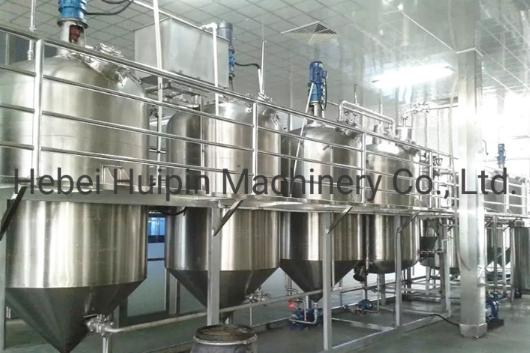Dec . 29, 2024 05:08 Back to list
flaxseed oil refinery unit products
The Refining Process of Flaxseed Oil Understanding Its Products and Benefits
Flaxseed oil, derived from the seeds of the flax plant (Linum usitatissimum), is well-known for its rich content of omega-3 fatty acids, particularly alpha-linolenic acid (ALA). As the demand for healthy fats has risen, the refining process of flaxseed oil has gained importance, not only for its nutritional benefits but also for the various products that can be created through this process. This article delves into the flaxseed oil refinery unit, the refining process, and the resulting products.
The Importance of Flaxseed Oil
Flaxseed oil is increasingly sought after in the health and wellness industry due to its numerous benefits. It is celebrated for its potential to reduce heart disease risk, improve skin health, and alleviate symptoms related to inflammation. Being plant-based, it is particularly appealing to vegans and vegetarians as an alternative source of essential fatty acids. The popularity of flaxseed oil has necessitated the development of efficient refining processes to meet consumer demand for high-quality oil.
The Refining Process
The refining of flaxseed oil involves several key steps, each designed to enhance the oil's purity, shelf life, and overall quality. The primary stages of flaxseed oil refining are
1. Extraction The first step involves the extraction of oil from flaxseeds. This can be done using mechanical pressing or solvent extraction methods. Mechanical pressing, or cold pressing, preserves many of the oil's nutrients but typically yields less oil. Solvent extraction, on the other hand, maximizes oil yield and is often used in commercial settings.
2. Degumming After extraction, the crude flaxseed oil contains phospholipids, which can cause cloudiness and affect the oil's stability. In the degumming stage, water or acid is added to coalesce the phospholipids, forming a substance that can be easily removed. This step is crucial for enhancing the oil's clarity.
3. Neutralization Crude oil often contains free fatty acids that can impart an undesirable taste and accelerate rancidity. Neutralization involves treating the oil with an alkaline substance, typically sodium hydroxide, which neutralizes these free fatty acids, yielding a more stable and palatable product.
4. Bleaching This stage focuses on removing pigments, oxidation products, and other impurities that can affect the oil's color and flavor. Bleaching earth or activated carbon is added to absorb these impurities, which are then filtered out, resulting in a lighter-colored oil.
flaxseed oil refinery unit products

5. Deodorization The final refining step involves heating the oil under a vacuum to remove any volatile compounds that contribute to undesirable odors and flavors. This ensures that the oil is palatable and preserves its desirable properties.
Products of Flaxseed Oil Refining
The refining of flaxseed oil leads to the production of various end products, each with unique applications
1. Refined Flaxseed Oil This is the primary product of the refining process. It is devoid of impurities and has a neutral taste, making it ideal for culinary uses, salad dressings, and as a dietary supplement.
2. Flaxseed Meal After oil extraction, the remaining flaxseed cake can be processed into flaxseed meal. This product is rich in protein, fiber, and lignans, making it popular in baking and as a dietary supplement.
3. Cold-Pressed Flaxseed Oil Retaining more nutrients, this unrefined oil is often marketed as a premium product. While it has a shorter shelf life due to being less processed, it is favored for its health benefits and natural flavor.
4. Flaxseed Oil Capsules For those who prefer not to use oil in cooking or baking, refined flaxseed oil can be encapsulated into softgel form, making it a convenient way to incorporate omega-3s into one’s diet.
5. Cosmetic Products The non-greasy nature and moisturizing properties of flaxseed oil make it a valuable ingredient in skincare products. It can be found in creams, lotions, and hair products due to its beneficial effects on skin health and hydration.
Conclusion
The refining of flaxseed oil is a vital process that helps produce high-quality products with extensive applications in culinary and cosmetic industries. As awareness of the health benefits of flaxseed oil continues to grow, the efficiency and effectiveness of refining processes will play a critical role in meeting consumer demand, ensuring that the nutritional advantages of this superfood are accessible to all.
-
Leading Food Oil Refined Unit Companies | Quality & Efficient Solutions
NewsAug.27,2025
-
Expert Food Oil Refined Unit Companies | Advanced & Efficient Refining
NewsAug.26,2025
-
Food Oil Refined Machine Companies: High-Efficiency Oil Refining
NewsAug.25,2025
-
Popular Commercial Oilseed Crushing Machinery | High-Yield Oil Expeller Press
NewsAug.24,2025
-
Food Oil Refined Unit Companies: Leading Manufacturers & Exporters
NewsAug.23,2025
-
Expert Oil Filter Machine Service & Solutions | Quality & Reliability
NewsAug.22,2025
